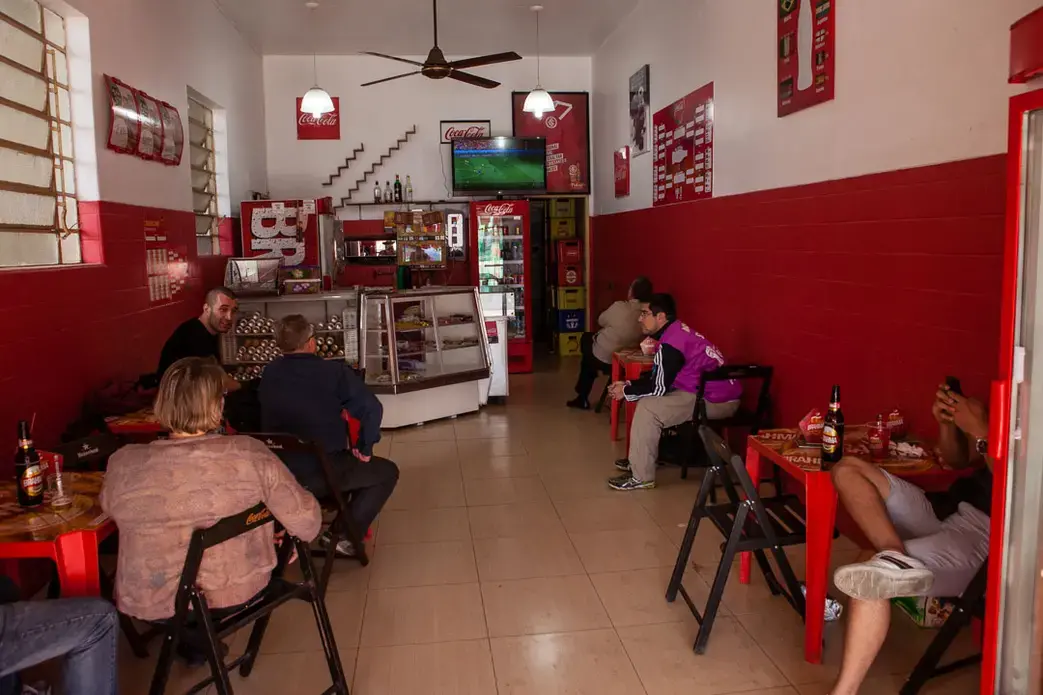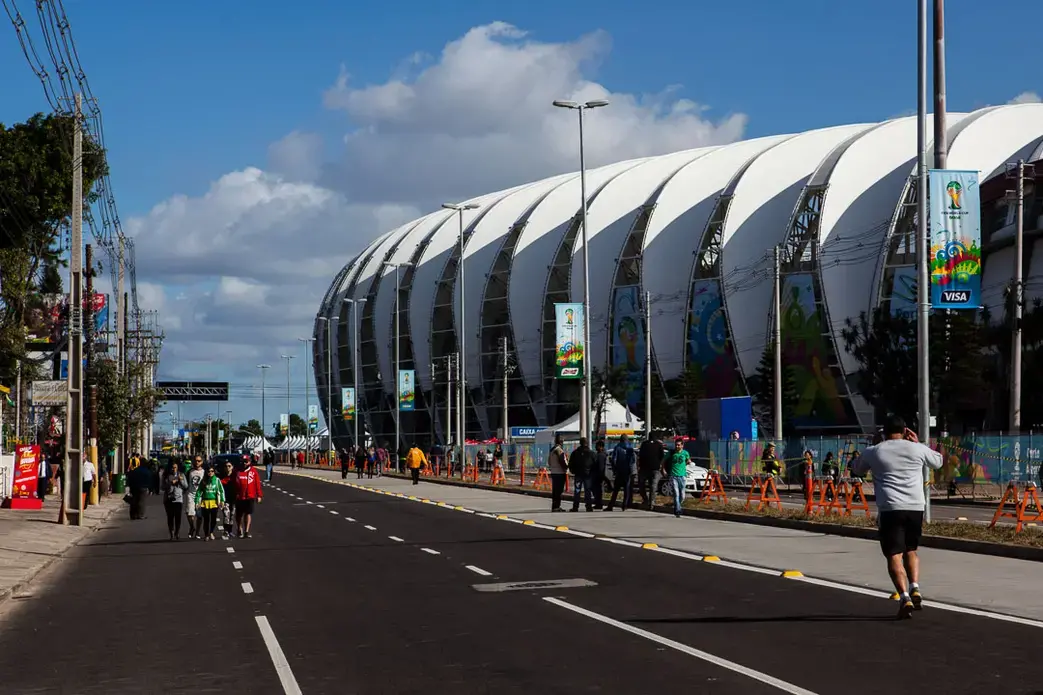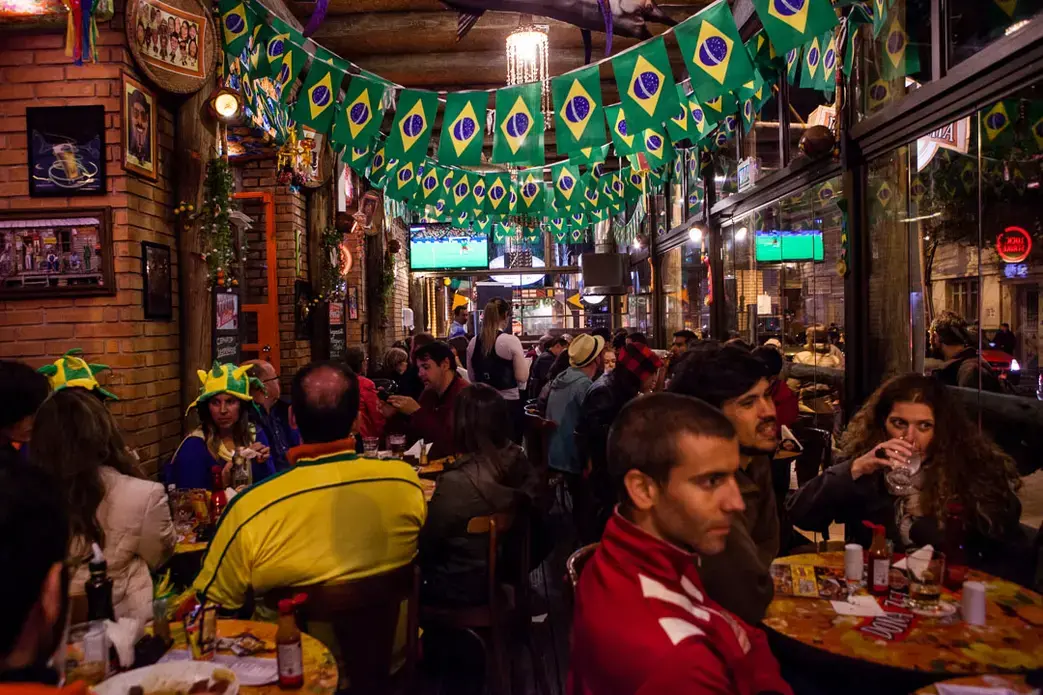There was something in the air when I arrived in Porto Alegre last week. Something I couldn't quite register until I stepped out of the airport to catch a taxi. It was cold, downright chilly. A frigid breeze shocked my system after sweating through every pore of my body in Fortaleza. Porto Alegre is in the far south of Brazil, close to the border of Uruguay, and in many ways its residents keep closer cultural connections with the gaucho lifestyle than their samba-fueled cousins on the beaches to the north. They are still ardent supporters of the Brazilian team, but I would find that they show their love in a moderate manner, one befitting the more tempered European character of their region.
Porto Alegre was the sixth city I visited in my whirlwind tour of Brazil. My mind was slowly unraveling, and I needed to take a nap before wandering toward the Estadio Beiro-Rio, the venue for a Group B clash between Australia and the Netherlands. It was a beautiful fall day, though. Soft sunlight was warming the Australian and Dutch fans heading down the Avenue Borges de Medeiros toward the stadium. The broad thoroughfare was closed to pedestrian traffic, and the locals came out to gaze upon the kangaroo and clog adorned crowd while sipping mate out of calabash gourds. The atmosphere couldn't have been more casual.
Once the final fans hurried through security, I began my ritualistic circumambulation of the stadium. Everything was positively sleepy. Most people were enjoying a few beers at lunch with the game playing in the background. The streets themselves were closed and empty for kilometers around the stadium. It was surreal. I felt like I was the last person left in the city, except for the bleached circular stadium occasionally letting loose a rousing roar. The Estadio Beiro-Rio sits quite beautifully at the tail end of a park running down the banks of the Guaiba River. I spent most of the first half meandering down the shoreline, trying to keep track of the score based on the number of stadium rumbles and the accompanying chants.
Eventually I reached the FIFA Fan Fest that also sat on the banks of the Guaiba River. Thousands of fans had come out in the middle of the day to watch Holland battle it out with Australia. Not much work is getting done in Brazil this month. The economy is going to lose a GDP point or two thanks to the obsessive television watching and low job attendance. Everyone was enjoying the match all the same, and although the Porto Alegre crowd was emanating a laid-back vibe (it's the first time I've seen masses of people sitting in a FIFA Fan Fest), they gave a good cheer or two as Australia tried to rally against the skilled Dutch team.
After the match I waited for the crowds to emerge from the stadium and begin their procession back to the city center. There was even a small display of cheeky dissent as two locals walked behind a crowd of Dutch fans carrying a banner reading, "Whoever is against the Cup is dressed in Orange. F___ FIFA." The Dutch fans were still exuberant, and the Australians joined them in their frivolity. Their team was supposed to fair dismally in the World Cup, but they put up a good fight against a stronger Dutch side. One of the best goals of the tournament had just been struck by their forward, Tim Cahill. They still bore their blowup kangaroos on their shoulders proudly.
By nightfall it seemed like the entire stadium had congregated again in the Cidade Baixa, the hip historical quarter that is lined with bars and restaurants. The laid-back atmosphere of the town spiked into a full-on street party, the likes of which are only seen during Carnival. It was an impromptu international World Cup festival. Porto Alegre was keen to host the World Cup and cut loose for a few weeks. It was one the first cities I visited where nobody was disappointed with the municipal government and other local expenditures surrounding the tournament. Revelry resounded through the streets. It seemed like there was no end in sight when I went to bed around 3 a.m. I would have joined the crowds until dawn, but I had a flight that same morning. Only a few hours of sleep, and then I was off to Curitiba.



























